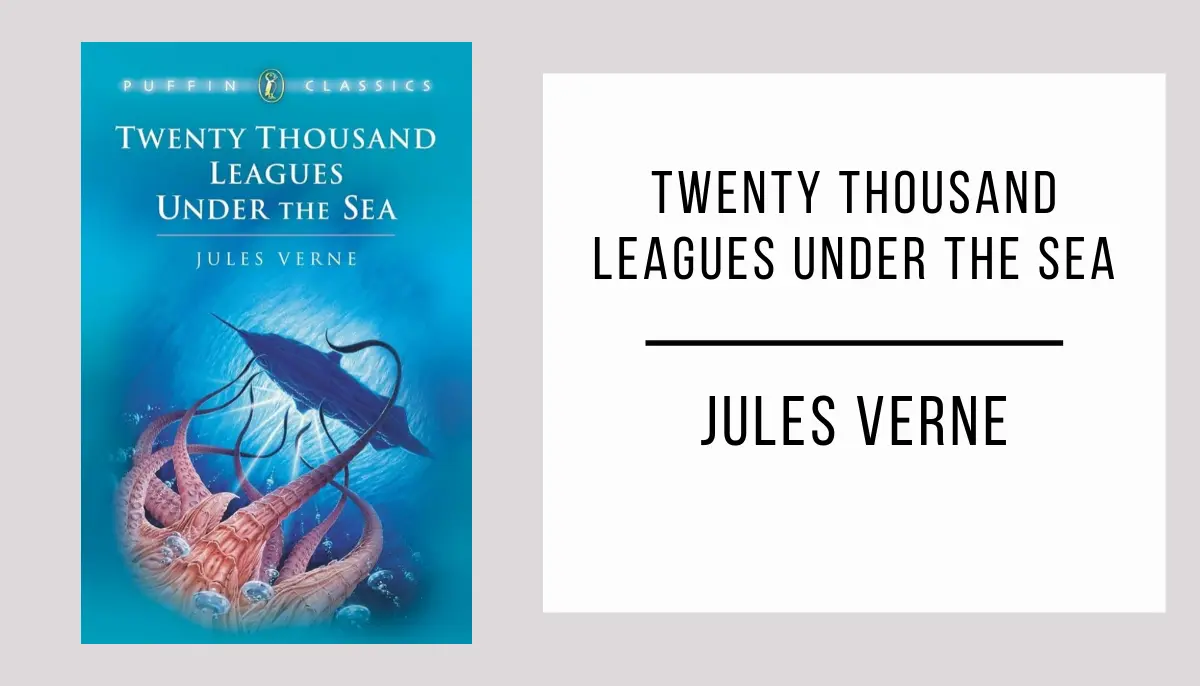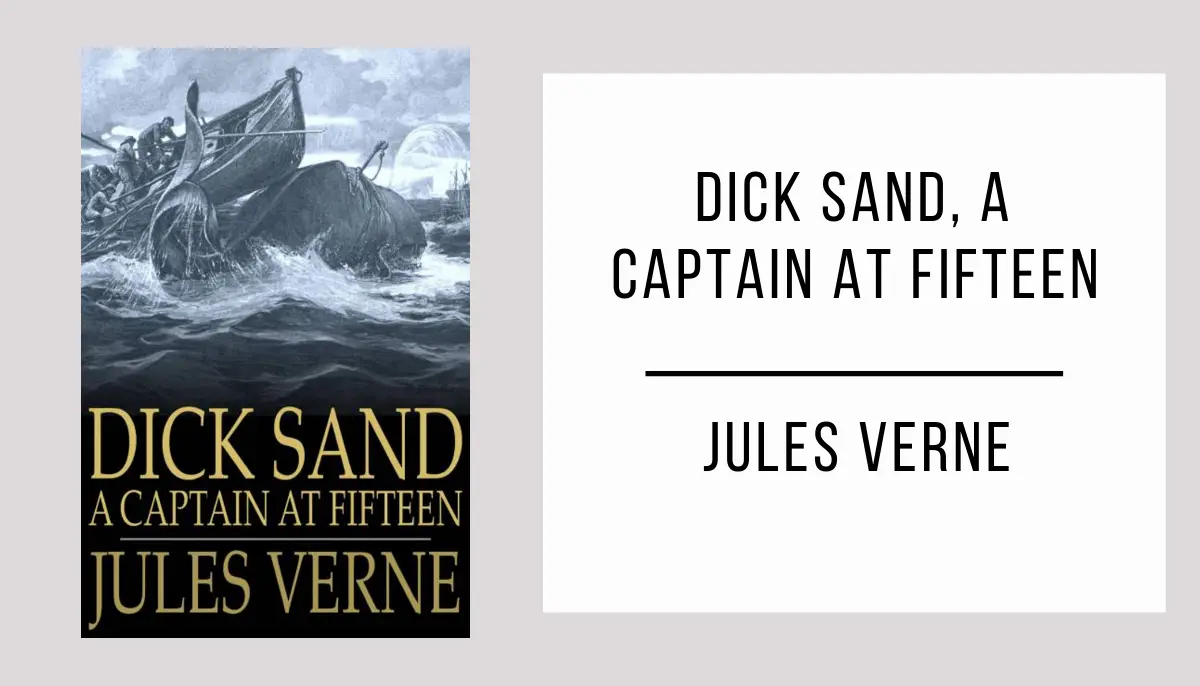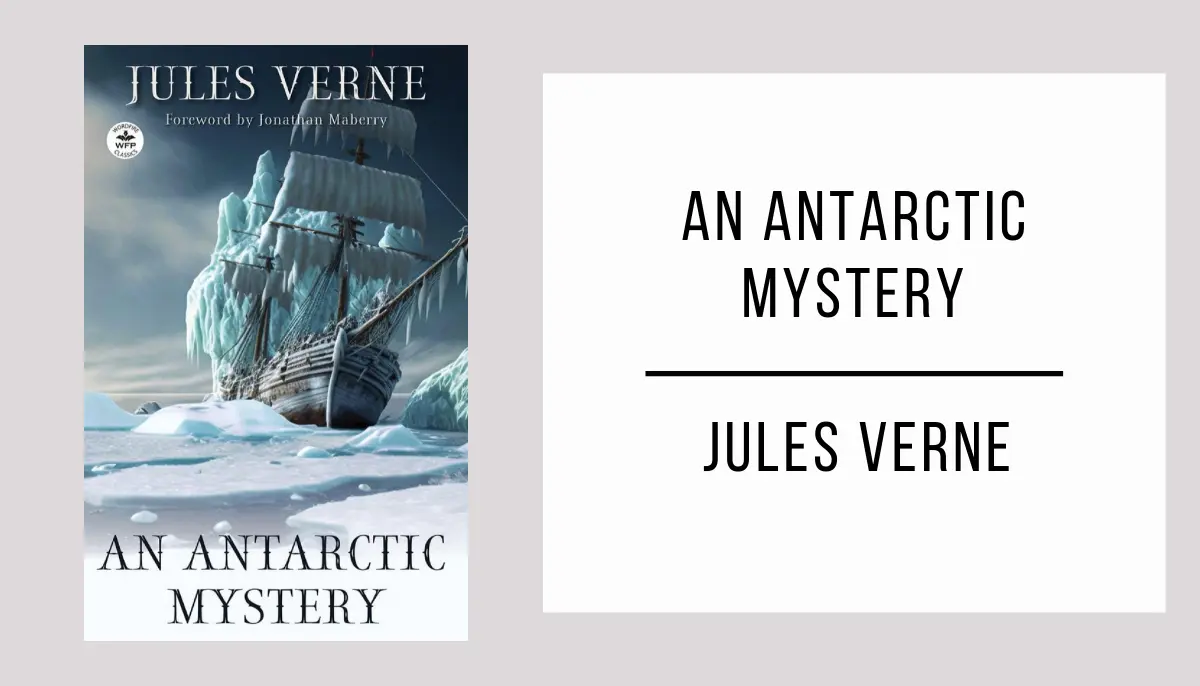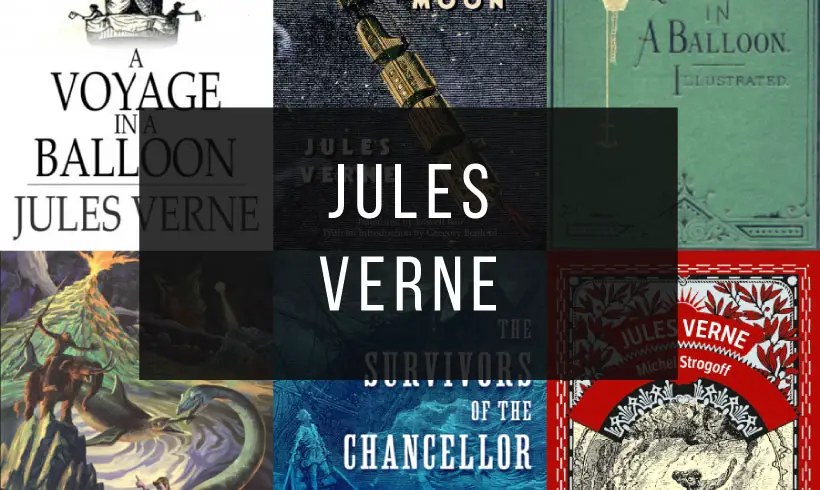Dive into the incredible adventures of Jules Verne with our collection of free PDF books.
Jules Verne, the visionary author known for his captivating stories and boundless imagination, will transport you to worlds full of wonders and discoveries.
Explore his tales filled with intrigue and excitement, where you’ll delve into the depths of the ocean, soar through the skies in airships, and journey to exotic and unknown places.
We invite you to browse our page and discover the wide variety of books available, from classics like “Journey to the Center of the Earth” to lesser-known gems like “The Mysterious Island.”
Don’t waste any more time; start your download now and immerse yourself in the amazing stories that only Jules Verne can offer. Explore new horizons and let yourself be carried away by the magic of his unique narrative.
Get ready to embark on an unforgettable journey through the books of Jules Verne. Download them for free in PDF and start your literary adventure today.
1) Around the World in Eighty Days

Around the World in Eighty Days is a novel by the acclaimed French writer Jules Verne, published between 1872 and 1873. The protagonist of this story, the gentleman Phileas Fogg, leads a good life in London, until one day, he decides to bet 20,000 pounds that he could travel the world in 80 days.
He set off with his friend Jean Passepartout on October 2, 1872, at 8:45 pm. From then on, an adventure full of humor and heroism begins, between trains and steamboats. Finally, the story concludes that what Fogg gains at the end of the journey is much more valuable than money.
2) Twenty Thousand Leagues Under the Sea

Twenty Thousand Leagues Under the Sea is an exciting adventure in the depths of the ocean. Join Professor Aronnax and his encounter with the enigmatic Captain Nemo aboard the submarine Nautilus.
This masterpiece by Julio Verne explores themes such as scientific curiosity, the relationship between man and nature, and the limits of exploration. Immerse yourself in an underwater world full of wonders and dangers.
Dive into the pages of Twenty Thousand Leagues Under the Sea and let yourself be carried away by Verne’s imagination. You will discover a fascinating universe, filled with astonishing creatures and profound reflections.
3) Journey to the Center of the Earth

Journey to the Center of the Earth is an exciting literary expedition that immerses you into the unknown depths of our planet. Join Professor Lidenbrock and his nephew Axel on a journey filled with dangers, wonders, and astonishing discoveries.
Exploration, scientific curiosity, and bravery intertwine within the pages of this masterpiece by Julio Verne. Through his captivating narrative, the author invites us to reflect on the limits of human exploration and the inexhaustible desire for knowledge.
Dive into the pages of Journey to the Center of the Earth and let yourself be carried away by the most fascinating adventure. Discover an underground world full of mystery and wonders, where each page will transport you on an exhilarating journey into the unknown.
4) From the Earth to the Moon

From the Earth to the Moon is an exhilarating literary journey that will transport you to an era of space exploration and boundless adventure. Join Impey Barbicane, J.T. Maston, and Michel Ardan on their bold mission to our natural satellite.
This masterpiece by Julio Verne delves into themes of space exploration, scientific advancements, and human ambition to conquer new frontiers. Immerse yourself in a story full of ingenuity, camaraderie, and the desire to reach the impossible.
You cannot miss the opportunity to embark on this fascinating literary adventure. Discover the secrets of the Moon, challenge the limits of science, and let yourself be captivated by the immersive prose of Julio Verne.
5) The Lighthouse at the End of the World

The Lighthouse at the End of the World is an exciting tale of bravery and survival at the remote Cape Horn.
This work by Julio Verne explores themes of loneliness, friendship, and the struggle between good and evil as the characters confront dangerous pirates at an isolated lighthouse.
Immerse yourself in the pages of The Lighthouse at the End of the World and be captivated by the intrigue and courage of its protagonists. An epic adventure that will keep you on the edge of your seat until the last page.
6) Michael Strogoff: The Courier of the Czar

Michael Strogoff: The Courier of the Czar is an exciting adventure set in 19th-century Russia. It follows the perilous mission of a brave czarist messenger through Siberia, facing betrayals, dangers, and unimaginable challenges.
This classic by Jules Verne addresses themes such as heroism, loyalty, and personal growth. Through its captivating narrative, it immerses us in a world of political intrigue, war, and courage amidst a Tartar invasion.
Don’t miss the opportunity to experience the thrilling odyssey of Michael Strogoff: The Courier of the Czar. With his masterful prose, Jules Verne will transport you to an era full of dangers and adventures.
7) Paris in the Twentieth Century

Paris in the Twentieth Century is a captivating journey into a dystopian future in the heart of the City of Light, where technology crushes creativity and artists struggle to survive.
With a biting critique towards the dehumanization of industrial society, this masterpiece by Julio Verne explores the conflict between overwhelming technology and the value of artistic expression, reminding us of the importance of preserving our humanity in a world dominated by efficiency.
Immerse yourself in the pages of Paris in the Twentieth Century and let yourself be captivated by Verne’s prophetic vision. This book will challenge you to question the direction our world is taking and inspire you to defend the importance of creativity and art in an increasingly technology-oriented society.
8) Five Weeks in a Balloon

Five Weeks in a Balloon is an exciting adventure that transports the reader across the African continent in a hot air balloon, filled with dangers, discoveries, and unforgettable emotions.
In this masterpiece by Julio Verne, themes such as bravery, exploration of the unknown, and overcoming obstacles are explored in a fascinating and exotic setting.
Immerse yourself in the pages of Five Weeks in a Balloon and let yourself be captivated by Verne’s magical writing, as you embark on an adventure that will keep you on the edge of your seat and awaken your spirit of exploration.
9) Around the Moon

Around the Moon is an exciting space journey of imagination. Join Michel Ardan, J.T. Maston, and Captain Nicholl on their interplanetary adventure as they orbit our nearest satellite and unveil the mysteries of the cosmos.
Exploring themes of space exploration, friendship, and bravery, Around the Moon immerses us in a universe of endless possibilities. Jules Verne invites us to dream beyond the bounds of science and human audacity.
Dive into the pages of Around the Moon and let yourself be carried away by Jules Verne’s overflowing imagination. Experience the thrill of traveling beyond Earth, discovering new horizons, and challenging the limits of the unknown.
10) The Green Ray

The Green Ray is an exciting odyssey in search of a unique natural phenomenon. Join Helena and her intrepid companions in this captivating adventure full of mystery and discoveries.
In The Green Ray, Verne explores human fascination with the unknown and the connection between nature and human curiosity. Through his characters, he immerses us in a world of exploration, love, and awe at the beauty of the universe.
Immerse yourself in the pages of The Green Ray and let yourself be enchanted by the charm of Julio Verne’s prose. Discover a universe full of emotions, adventures, and reflections on the very essence of life.
11) Master of the World

Master of the World is an exciting science fiction novel that immerses us in a world of adventures and mysteries aboard an incredible vessel invented by Robur.
Throughout its pages, Master of the World addresses themes such as power, scientific ethics, and the relationship between technological advancement and humanity, offering a fascinating reflection on the role of science in our society.
Discover the astonishing universe created by Julio Verne in Master of the World and let yourself be carried away by a captivating plot that will keep you hooked from beginning to end.
12) In Search of the Castaways

In Search of the Castaways is an exciting adventure by Jules Verne that will transport you through mysterious journeys around the world in search of a missing captain.
In this classic work, Verne combines elements of geographical exploration, bravery, and loyalty, providing us with a story full of intrigue and surprising discoveries.
You cannot miss the opportunity to immerse yourself in In Search of the Castaways, a novel that will keep you hooked from beginning to end, living alongside the characters the exciting adventures of this unforgettable quest.
13) Dick Sand, A Captain at Fifteen

Dick Sand, A Captain at Fifteen is an exciting maritime adventure where a young boy becomes a captain and struggles to survive against all odds.
Through its pages, “Dick Sand, A Captain at Fifteen” explores themes of bravery, youth leadership, and resilience against adversity at sea.
Immerse yourself in the fascinating journey of A Fifteen-Year-Old Captain and discover the courage of a young captain who defies limits and experiences a unique adventure at sea.
14) Eight Hundred Leagues on the Amazon

Eight Hundred Leagues on the Amazon is an exciting literary work that immerses us in the depths of the Amazon jungle through the story of the Garral family and their struggle against a dark blackmail.
In Eight Hundred Leagues on the Amazon, Julio Verne skillfully combines elements of adventure, intrigue, and puzzles, creating a captivating plot that keeps the reader on edge until the end.
Dive into the pages of Eight Hundred Leagues on the Amazon and let yourself be carried away by a story full of mystery and suspense. Discover the hidden secrets in the lush Amazon jungle and enjoy an unforgettable literary experience.
15) The Carpathian Castle

The Carpathian Castle is a captivating tale of mystery and suspense that will transport you to a world filled with intrigue and hidden secrets.
In this work by Julio Verne, themes such as the power of obsessive love, supernatural enigmas, and the relentless pursuit of truth are explored. A perfect combination that will keep you engaged until the last page.
Immerse yourself in the pages of The Carpathian Castle and let yourself be seduced by Julio Verne’s masterful prose. A fascinating literary experience you won’t be able to resist.
16) Robur the Conqueror

Robur the Conqueror is an exciting novel by Jules Verne that will immerse you in a world of adventure filled with intrigue and revolutionary technology.
In Robur the Conqueror, Verne explores themes such as scientific advancements in aviation, the conflict between opposing views on the use of aircraft, and the struggle for survival in extreme situations.
Don’t miss the opportunity to embark on this fascinating work by Jules Verne! Robur the Conqueror will transport you on an exhilarating journey and invite you to explore the boundaries of imagination and adventure.
17) The Adventures of Captain Hatteras

The Adventures of Captain Hatteras is an exciting tale about the intrepid expedition of an English captain in search of the North Pole.
This work by Jules Verne addresses themes of exploration, bravery, and the human struggle against nature, immersing the reader in a world of extreme challenges and crucial decisions.
Dive into the pages of The Adventures of Captain Hatteras and let yourself be carried away by the excitement of this thrilling adventure-filled story, which will transport you on an unforgettable journey to the ends of the Earth.
18) Off on a Comet

Off on a Comet is a thrilling interplanetary adventure that transports the reader to a comet tearing a portion of the Mediterranean from Earth, leading its brave characters to live unique and exciting experiences.
With its themes of space travel and science fiction, Off on a Comet opens the doors to a fascinating world of exploration and discovery, where survival and forced coexistence intertwine with the challenges of the alien environment.
Immerse yourself in the pages of Off on a Comet and let yourself be carried away by the masterful pen of Julio Verne. This captivating work will transport you to unknown places, awaken your imagination, and keep you glued to its pages until the end.
19) The Purchase of the North Pole

The Purchase of the North Pole is a thrilling novel by Julio Verne that immerses us in an exciting story of scientific exploration and unforeseen consequences.
In this work, Verne addresses themes such as environmental manipulation, the search for natural resources, and responsibility in the use of technology, offering profound reflections on the impact of our actions.
Discover the hidden secrets within the pages of The Purchase of the North Pole and let yourself be carried away by Julio Verne’s masterful narrative. An adventure that will keep you intrigued and invite you to reflect on the balance between scientific advancement and the preservation of the world around us.
20) An Antarctic Mystery

An Antarctic Mystery is an exciting adventure in the South Pole, full of mystery and fascinating discoveries. Join Jeorling in his quest to unravel the hidden secrets within the icy glaciers.
This classic by Julio Verne explores themes such as polar exploration, survival in extreme environments, and the longing to discover the unknown. Immerse yourself in a lost world and be captivated by the beauty and danger of the icy landscapes.
Don’t miss the opportunity to enjoy An Antarctic Mystery, a masterpiece of classical literature. Let yourself be enthralled by Verne’s engaging prose and embark on an epic adventure that will keep you on the edge of your seat until the last page.
21) The Child of the Cavern

The Child of the Cavern is a captivating novel by Julio Verne that immerses the reader in the mysterious depths of a coal mine in Scotland, where adventure, love, and secrets intertwine in an exciting plot.
Through his narrative, Verne explores themes such as underground exploration, overcoming obstacles, and the struggle for survival in a hostile environment. The Child of the Cavern invites us to delve into an unknown and fascinating world, where courage and determination are key to facing the challenges that arise.
Open the pages of The Child of the Cavern and let yourself be enveloped by Julio Verne’s captivating prose. This underground adventure will transport you to a universe full of emotions, intrigue, and unexpected discoveries.
22) The Survivors of the Chancellor

The Survivors of the Chancellor is a captivating work by Julio Verne that recounts the epic shipwreck of the eponymous vessel and the struggle for survival of its brave crew.
Throughout its pages, The Survivors of the Chancellor addresses themes such as adversity, courage, and the extreme limits to which humans can go in desperate situations.
Immerse yourself in the thrilling story of The Survivors of the Chancellor and let yourself be carried away by Julio Verne’s masterful pen. Discover a journey full of suspense and excitement that will keep you captivated until the last page.
23) Facing the Flag

Facing the Flag is an exciting novel by Julio Verne that will immerse you in a world of adventure, mystery, and action. Discover the story of Tomás Roch and his revolutionary creation: the Roch fulgurator.
In Facing the Flag, Verne explores themes such as the power of weapons of mass destruction, scientific ethics, and the consequences of militarism.
Don’t miss this fascinating work by Julio Verne. Facing the Flag will keep you intrigued and entertained from start to finish. Embark on this thrilling literary adventure and find out why Verne remains one of the great masters of classic literature.
24) The Begum's Fortune

The Begum’s Fortune is a captivating novel by Jules Verne that narrates the rivalry between two heirs for an Indian fortune, unleashing a confrontation between pacifism and militarism in two opposing cities.
Thematically, this work explores the power of money and technology, questioning how they influence society and posing reflections on utopia, the conflict between good and evil, and social critiques.
Dare to immerse yourself in the fascinating world of The Begum’s Fortune, where passions, ideals, and opposing visions intertwine in a story full of intrigue and reflection.
25) Ticket No. "9672"

Ticket No. “9672” is an exciting adventure story written by Julio Verne. Immerse yourself in a world of suspense and romance as you follow the fascinating journey of a Norwegian fisherman and his lottery ticket.
In Ticket No. “9672”, Julio Verne explores themes such as destiny, chance, and the pursuit of happiness. Through unexpected twists and memorable characters, this work invites you to reflect on the importance of our decisions and the impact of chance on our lives.
Don’t miss the opportunity to delve into the pages of Ticket No. “9672”. With its captivating narrative and thrilling adventures, Verne will transport you to a world full of intrigue and excitement.
26) Godfrey Morgan

Godfrey Morgan is an exciting adventure on a deserted island where survival becomes a constant challenge.
This novel by Julio Verne combines comedy and wit in a parody of the famous story of Robinson Crusoe, exploring themes such as shipwreck and the struggle for survival in a hostile environment.
Immerse yourself in the pages of Godfrey Morgan and let yourself be carried away by the humor and surprises of this captivating story that will keep you on the edge of your seat. Discover how Godfrey and his friend Tartelett face unexpected challenges and overcome obstacles in their struggle for survival.
27) A Floating City

A Floating City is an exciting high-seas adventure aboard the gigantic transatlantic ship turned floating city. Julio Verne immerses us in a world of mystery and chance encounters that will keep the reader on the edge of their seat.
Themes such as maritime travel, naval technology, and character exploration intertwine in A Floating City. Verne invites us to discover the wonders and dangers of transatlantic navigation while exploring cultural contrasts and nationalities in this fascinating story.
Immerse yourself in the pages of A Floating City and let yourself be carried away by Julio Verne’s boundless imagination. With its captivating style and plot full of surprises, this literary classic will transport you to a world of unforgettable adventures.
28) The Fur Country

The Fur Country is an exciting Arctic adventure full of mystery and exploration, where a brave group ventures into unknown lands in search of new horizons.
In this captivating work by Julio Verne, themes of survival, courage, and the relentless beauty of the Arctic are explored, transporting readers to a frigid world full of dangers and discoveries.
You cannot miss the opportunity to immerse yourself in the pages of The Fur Country, a story that will challenge you and keep you on the edge of your seat until the last page.
29) The tribulations of a Chinaman in China

The Tribulations of a Chinaman in China is an exciting adventure that follows the footsteps of Kin-Fo, a wealthy man who embarks on a journey through exotic Imperial China in search of fortune and redemption.
This masterpiece by Julio Verne addresses themes such as the pursuit of true happiness, conflicts between wealth and personal fulfillment, and the cultural clash between East and West, all wrapped in a plot full of intrigue and surprises.
Immerse yourself in the pages of “The Tribulations of a Chinaman in China” and let yourself be carried away by Julio Verne’s captivating prose. Discover a fascinating world full of adventures, unforgettable characters, and reflections on the human condition.
30) Cesar Cascabel

César Cascabel is an exciting journey filled with adventures and dangers. Join César, his family, and a series of characters on their quest for fortune in North America.
This classic by Julio Verne combines elements of travel literature and adventure novels. It explores themes such as bravery, overcoming obstacles, and the power of family.
Immerse yourself in the pages of César Cascabel and let yourself be carried away by Julio Verne’s boundless imagination. Discover a world full of thrilling episodes and unforgettable characters.
31) The Blockade Runners

The Blockade Runners is the thrilling tale of a group of men determined to escape from an island during the Civil War. With wit and courage, they construct an improvised boat to break through the naval blockade and return home.
This novel by Julio Verne tackles themes such as engineering, overcoming obstacles, and camaraderie. Faced with impossible challenges, the characters demonstrate the strength of human ingenuity and the importance of collaboration in problem-solving.
Immerse yourself in the epic adventure of The Blockade Runners and let yourself be captivated by Julio Verne’s boundless imagination. Discover how a group of men fights for their freedom amidst war, and be inspired by their bravery and determination.
32) Doctor Ox

Doctor Ox, a masterpiece by Jules Verne, is a gripping science fiction tale set in the mysterious city of Quiquendone, where Doctor Ox’s experiments unleash unexpected and fascinating events.
The book explores themes such as scientific manipulation, the unforeseen effects of technological advancements, and conflicts between ambition and morality. Through its characters and immersive plot, Doctor Ox invites reflection on the consequences of unchecked science.
Immerse yourself in the pages of Doctor Ox and let yourself be captivated by Jules Verne’s literary brilliance. With its unique blend of intrigue, humor, and profound reflections, this classic work will transport you to a fascinating world and keep you hooked from beginning to end.
33) North Against South

North Against South is an exciting adventure novel written by the legendary author Julio Verne. Immerse yourself in the American Civil War as you follow James Burbank’s intense struggle to defend the abolition of slavery and rescue his daughter from the clutches of a fearsome slaveholder.
This captivating work by Verne tackles historically and socially relevant themes such as slavery and racism in 19th-century America. Through brave and complex characters, the author invites us to reflect on the importance of freedom and equality in times of conflict.
Don’t miss the opportunity to delve into the pages of North Against South, a story that will keep you on the edge of your seat until the very last page.
34) Kéraban the Inflexible

Keraban the Inflexible is a fascinating journey through the stubbornness and determination of a Turkish merchant in search of his destiny.
This captivating work by Julio Verne explores themes of perseverance, overcoming obstacles, and the power of will amidst unforeseen challenges.
Immerse yourself in the pages of Keraban the Inflexible and let yourself be inspired by the incredible story of a stubborn man who defies all odds to achieve his goal.
35) In the year 2889

In the year 2889 by Julio Verne is an exhilarating journey into the future that unveils astonishing technological predictions and reflects on the fate of humanity in an ever-evolving world.
This literary classic immerses us in a futuristic world where technology and society intertwine. It explores themes such as scientific advancement, the relationship between man and machine, and the consequences of unchecked innovation.
Don’t miss the opportunity to explore Julio Verne’s fascinating visions in In the year 2889.
36) The Adventures of Three Russians and Three Englishmen in South Africa

The Adventures of Three Russians and Three Englishmen in South Africa is an exciting novel by Julio Verne that will transport you on a fascinating journey through the African continent.
Discover the fearless joint expedition between England and Russia in search of adventures, facing challenges, exploring unknown territories, and overcoming cultural conflicts.
Immerse yourself in this unforgettable read full of friendship, excitement, and discoveries in Southern Africa. Get ready to embark on a thrilling literary adventure with The Adventures of Three Russians and Three Englishmen in South Africa.
37) A Winter Amid the Ice

A Winter Amid the Ice is an exhilarating adventure novel written by Julio Verne. Immerse yourself in a tale of survival in the icy landscapes of Greenland and discover the fate of the brave explorers.
Through the exploration of love, betrayal, and the struggle for life in an extreme environment, A Winter Amid the Ice delves into themes such as determination, sacrifice, and resilience in the face of adversity.
Don’t miss the opportunity to enjoy the captivating prose of Julio Verne in A Winter Amid the Ice. Join this exciting adventure and let yourself be carried away by the emotion and suspense that await you on every page.
38) The Mysterious Island

The Mysterious Island is an exciting survival adventure on a deserted island, written by the master of classic literature, Julio Verne. In this captivating tale, a group of men struggles to survive and uncover the mysteries hidden within the island.
Through its pages, The Mysterious Island immerses us in themes of human ingenuity, friendship, and loyalty. Verne demonstrates the power of science and technology to overcome seemingly insurmountable challenges.
Dive into the wonderful prose of Julio Verne and let yourself be carried away by the intrigue and suspense of The Mysterious Island. A reading that will keep you on the edge of your seat, fueling your imagination and leaving you wanting more.





